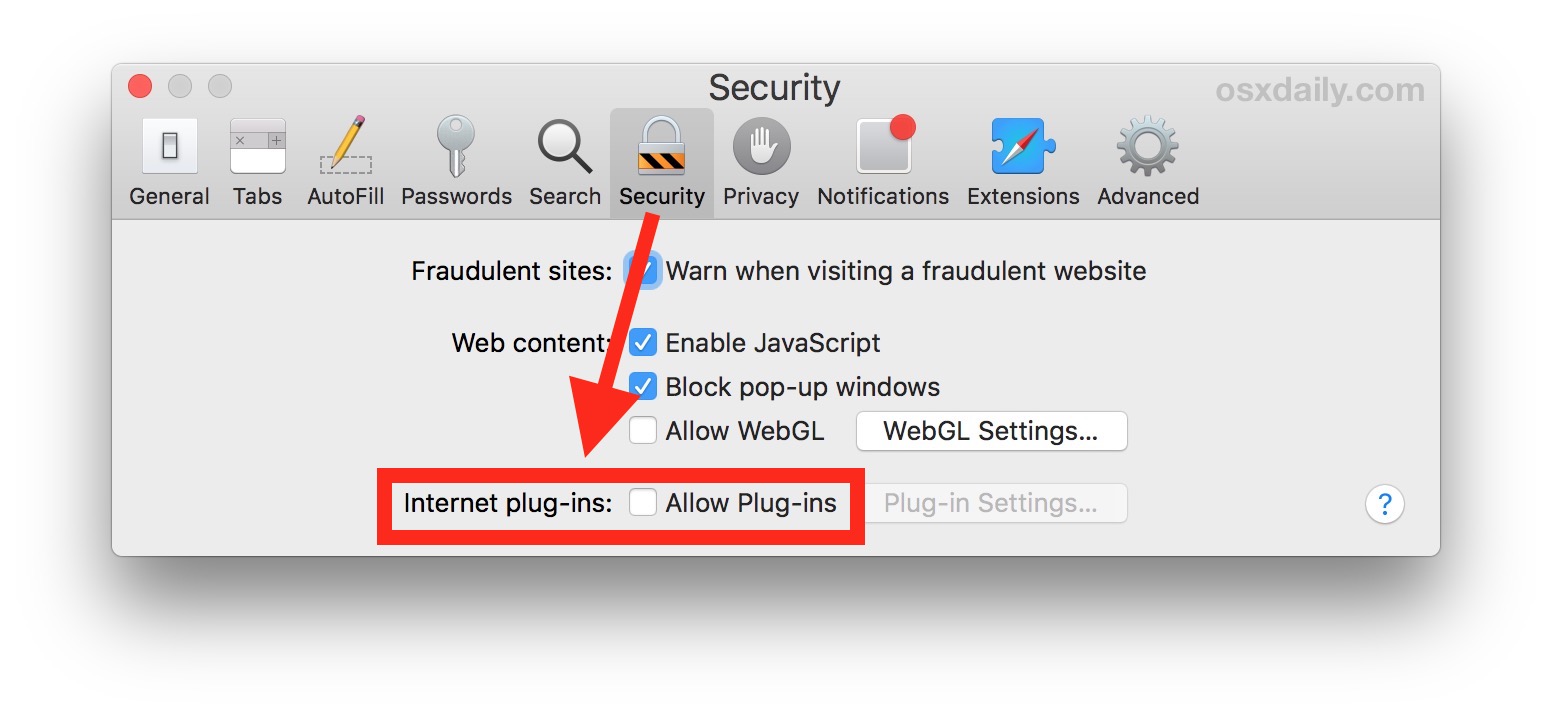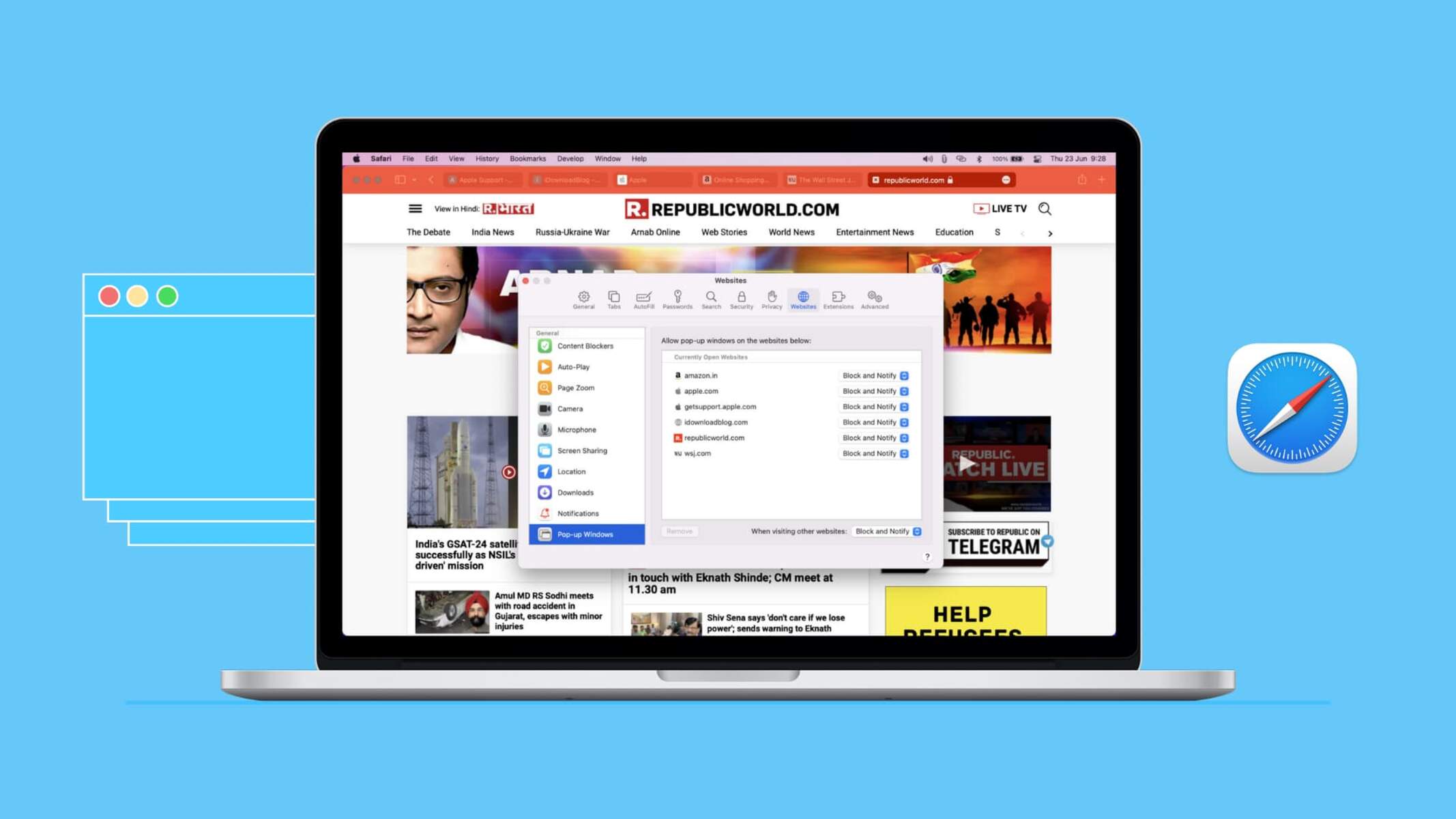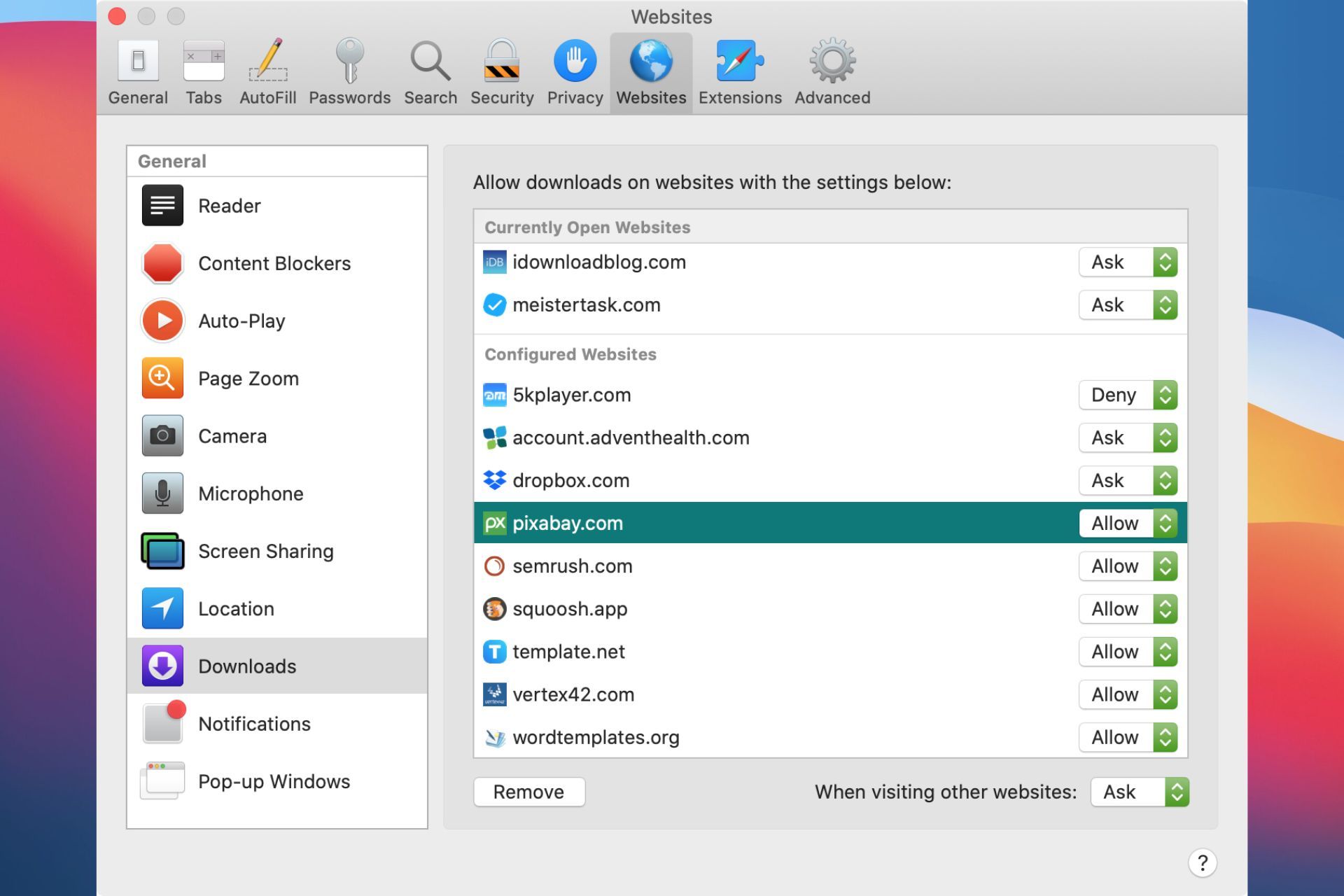Introduction
Safari, the sleek and user-friendly web browser developed by Apple, is renowned for its seamless performance and intuitive interface. As an avid Safari user, you may have encountered instances where certain plug-ins are blocked, hindering the full functionality of websites and web applications. This can be frustrating, especially when you rely on these plug-ins for various tasks, such as media playback, document viewing, or interactive content.
In this article, we will delve into the world of plug-ins on Safari, exploring the reasons behind their blockage and providing a comprehensive guide on how to unblock them. Whether you're a casual user or a tech-savvy enthusiast, understanding the nuances of plug-ins and how to manage them effectively can greatly enhance your browsing experience.
So, if you've ever been stymied by a blocked plug-in while using Safari, fear not! By the end of this article, you'll be equipped with the knowledge and tools to effortlessly unblock plug-ins, ensuring a seamless and enjoyable browsing experience on your favorite browser. Let's embark on this enlightening journey into the realm of Safari plug-ins and discover the key to unlocking their full potential.
Understanding Plug-Ins on Safari
Plug-ins are essential software components that extend the functionality of web browsers like Safari. They enable the browser to display specific types of content, such as multimedia, interactive applications, and document formats, that may not be supported natively. In the context of Safari, plug-ins play a pivotal role in enriching the browsing experience by allowing users to access a wide array of content and services seamlessly.
Safari supports various plug-ins, including those for media playback, document viewing, and interactive content. Common examples of plug-ins include Adobe Flash Player, QuickTime, and Java. These plug-ins are designed to enhance the browser's capabilities, enabling users to interact with dynamic content and multimedia elements embedded within web pages.
However, as technology evolves and web standards advance, the reliance on plug-ins has diminished. Modern web technologies such as HTML5 have largely replaced the need for traditional plug-ins, offering native support for multimedia and interactive content. Consequently, Safari, like many other browsers, has gradually transitioned away from plug-in dependence, favoring native web technologies for a more secure and efficient browsing experience.
In light of this shift, Safari has implemented measures to manage and restrict the usage of plug-ins. This includes the automatic blocking of certain plug-ins to prioritize security and performance. By understanding the role of plug-ins and the rationale behind their management, users can navigate the evolving landscape of web browsing with greater insight and adaptability.
As we delve deeper into the intricacies of plug-ins on Safari, it becomes evident that while they have been integral to the browsing experience in the past, their significance has waned in the face of modern web standards. Nevertheless, for legacy content and specific use cases, the ability to unblock and manage plug-ins remains a valuable feature for Safari users seeking to access a diverse range of online content.
Understanding the evolution and impact of plug-ins on Safari provides valuable context for addressing their management and unblocking. With this foundational knowledge in place, we can now explore the reasons behind the blockage of plug-ins and the steps to unblock them, empowering users to optimize their browsing experience on Safari.
Reasons for Blocking a Plug-In
The blocking of plug-ins on Safari is not arbitrary; rather, it is driven by several compelling reasons rooted in security, performance, and the evolving landscape of web technologies. Understanding these reasons is crucial for users to appreciate the necessity of plug-in management and the implications of their blockage.
-
Security Vulnerabilities: Plug-ins, especially older versions, are susceptible to security vulnerabilities that can compromise the integrity of the browser and the user's system. Exploits targeting plug-ins can serve as entry points for malware, phishing attacks, and other malicious activities. To mitigate these risks, Safari proactively blocks outdated or vulnerable plug-ins to safeguard users from potential security breaches.
-
Performance Impact: Certain plug-ins can significantly impact the performance of the browser, leading to sluggishness, unresponsiveness, and increased resource consumption. This can detract from the overall browsing experience, causing frustration for users. By blocking problematic plug-ins, Safari aims to maintain optimal performance and responsiveness, ensuring that users can navigate the web seamlessly without encountering performance-related issues.
-
Transition to Modern Web Standards: The evolution of web technologies, particularly the widespread adoption of HTML5 and other native web capabilities, has reduced the reliance on traditional plug-ins. Many functions previously handled by plug-ins, such as multimedia playback and interactive content, are now supported natively by modern browsers. As a result, Safari blocks certain plug-ins to encourage the adoption of native web standards, promoting a more secure, efficient, and standardized browsing experience.
-
Enhanced User Experience: In some cases, plug-ins may present intrusive or disruptive behavior, such as pop-ups, auto-play multimedia content, or excessive resource utilization. These actions can detract from the user experience, leading to a less enjoyable and more intrusive browsing environment. By blocking such plug-ins, Safari aims to enhance the overall user experience, prioritizing seamless and unobtrusive web interactions.
-
Compatibility and Stability: Outdated or incompatible plug-ins can introduce compatibility issues and instability within the browser environment. This can manifest as frequent crashes, rendering inconsistencies, or functional limitations. To maintain the stability and compatibility of the browser, Safari takes a proactive approach by blocking problematic plug-ins, thereby minimizing potential disruptions to the user's browsing sessions.
By comprehending the multifaceted reasons for blocking plug-ins on Safari, users can gain a deeper appreciation for the browser's commitment to security, performance, and user experience. This understanding sets the stage for the subsequent exploration of unblocking plug-ins, empowering users to make informed decisions and optimize their browsing environment.
Steps to Unblock a Plug-In on Safari
Unblocking a plug-in on Safari is a straightforward process that empowers users to access specific content and functionality that may have been previously restricted. Whether it's for viewing multimedia, interacting with web applications, or accessing legacy content, unblocking a plug-in can revitalize the browsing experience. Here's a comprehensive guide outlining the steps to unblock a plug-in on Safari:
-
Accessing Safari Preferences: To initiate the unblocking process, start by launching Safari and accessing the "Safari" menu located in the top-left corner of the screen. From the drop-down menu, select "Preferences" to open the Safari Preferences window.
-
Navigating to Security Settings: Within the Safari Preferences window, navigate to the "Security" tab. This section houses various security and plug-in management settings, providing users with the ability to customize their browsing environment.
-
Managing Plug-Ins: Under the "Web content" section of the Security tab, locate and click on the "Plug-in Settings" button. This action opens a dedicated window that displays a list of installed plug-ins and their respective settings.
-
Identifying Blocked Plug-Ins: In the Plug-in Settings window, identify the plug-in that has been blocked or restricted. This can be determined by reviewing the list of plug-ins and their status, which may indicate "Blocked" or "Ask" for permission.
-
Adjusting Plug-In Permissions: Select the blocked plug-in from the list and modify its permissions to unblock it. This can typically be achieved by changing the setting from "Block" or "Ask" to "On" or "Allow," depending on the specific terminology used in the Plug-in Settings window.
-
Confirming Changes: After adjusting the plug-in permissions, ensure to save the changes by clicking the "Done" or "Apply" button within the Plug-in Settings window. This action finalizes the modification and updates the plug-in's status, unblocking it for use within Safari.
-
Restarting Safari: To ensure that the changes take effect, it's advisable to restart Safari after unblocking the plug-in. This allows the browser to refresh its settings and apply the updated permissions, enabling seamless access to the previously restricted plug-in.
By following these straightforward steps, users can effectively unblock plug-ins on Safari, unlocking access to a diverse range of content and functionality. Whether it's for compatibility with specific websites, accessing legacy multimedia content, or utilizing essential web applications, the ability to manage plug-ins empowers users to tailor their browsing experience to their unique preferences and requirements.
Conclusion
In conclusion, the management of plug-ins on Safari plays a pivotal role in shaping the browsing experience, balancing the need for security, performance, and accessibility. As we've explored the reasons behind plug-in blockage and the steps to unblock them, it becomes evident that Safari's approach is rooted in a commitment to providing users with a secure, efficient, and versatile browsing environment.
The evolution of web technologies has reshaped the landscape of online content and interactions, prompting browsers like Safari to adapt and optimize their capabilities. While the reliance on traditional plug-ins has diminished, their continued relevance for specific use cases underscores the importance of plug-in management. By understanding the nuances of plug-ins and their impact on the browsing experience, users can navigate the dynamic web ecosystem with confidence and adaptability.
Unblocking a plug-in on Safari empowers users to access a diverse array of content, from legacy multimedia to interactive applications, ensuring that the browser remains versatile and accommodating to varying user needs. The seamless process of adjusting plug-in permissions underscores Safari's user-centric approach, allowing individuals to tailor their browsing environment to align with their preferences and requirements.
As technology continues to advance, Safari remains at the forefront of innovation, prioritizing security, performance, and user experience. The browser's proactive measures to manage plug-ins reflect a commitment to fostering a safe and efficient browsing environment, where users can explore the web with confidence and convenience.
In essence, the ability to unblock plug-ins on Safari represents a harmonious blend of tradition and innovation, where legacy content meets modern web standards. By embracing this balance, Safari empowers users to embrace the full spectrum of online content and interactions, ensuring that the browsing experience remains enriching, seamless, and tailored to individual preferences.
In the ever-evolving digital landscape, Safari's approach to plug-in management serves as a testament to its dedication to user empowerment and technological advancement. By embracing the principles of security, performance, and adaptability, Safari continues to redefine the boundaries of web browsing, setting the stage for a future where accessibility and innovation converge to create a truly immersive online experience.

























